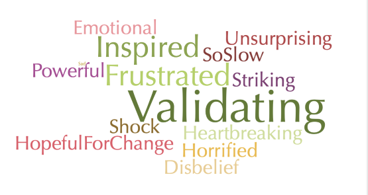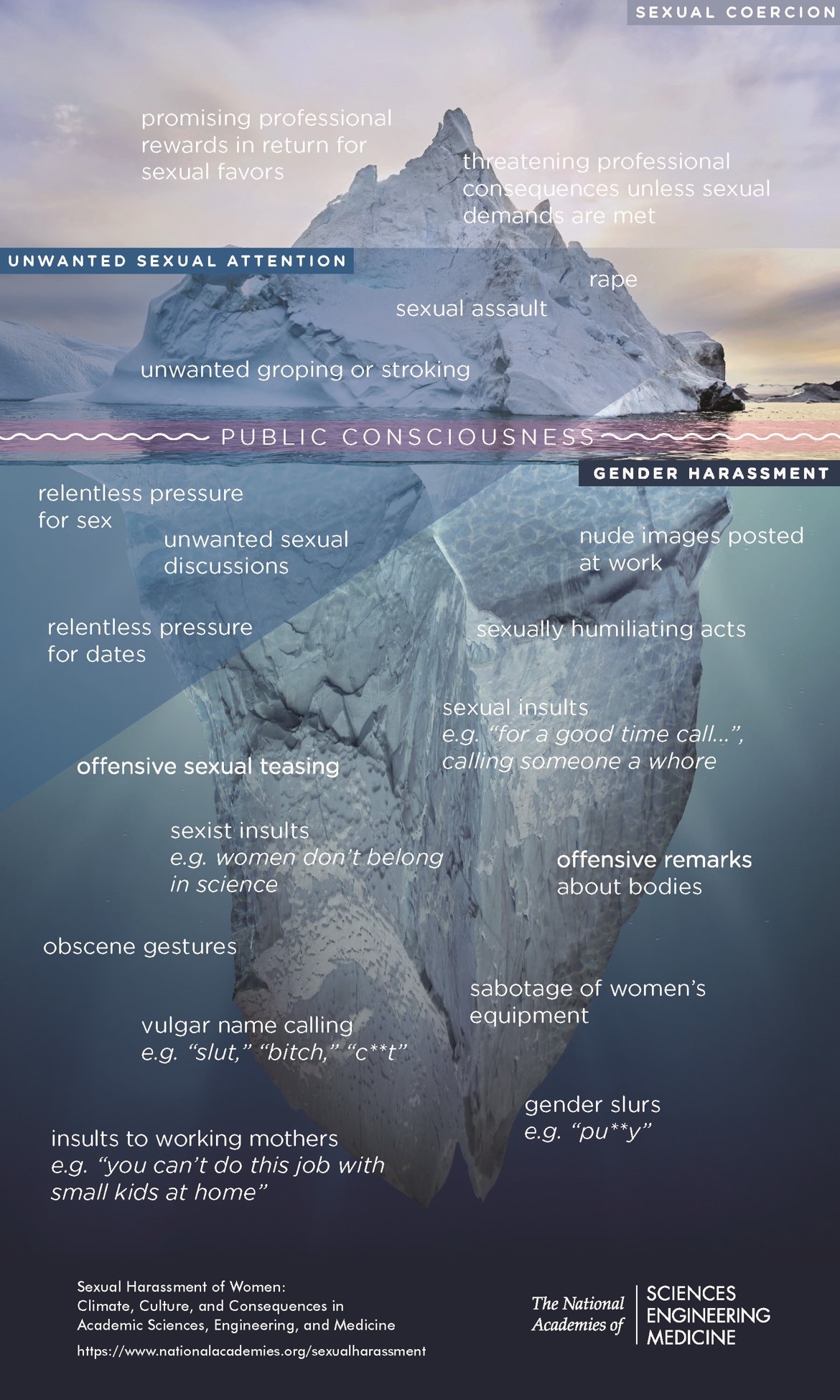by Susy Kohout, Montana State University
During Biophysics Week 2021, BPS hosted a screening of the documentary Picture a Scientist, a powerful statement on gender-based harassment experienced by women in STEM, including at the intersection of gender and race. The film is currently available to view via PBS in the United States and to rent or buy on Amazon Prime Video.
The Professional Opportunities for Women Committee (CPOW) organized a panel of biophysicists to discuss their reactions to the movie. Our panelists kindly volunteered their time to explore what we all learned from the movie as well as positive steps we can all take to make science and biophysics more diverse, inclusive and equitable.
Panelists:
Dr. Enrique De La Cruz studies actin cytoskeleton, molecular motor proteins, and nucleotide signaling enzymes. He is Department Chair of the Molecular Biophysics and Biochemistry Department at Yale University.
Dr. Miriam Goodman is a sensory physiology seeking to understand how we feel. She is Department Chair of the Molecular and Cellular Physiology Department at Stanford University
Dr. Theanne Griffith is a sensory neuroscientist tackling how the nervous system transmits thermal sensations. She is an Assistant Professor at UC Davis. She is also a children’s book author.
Dr. Giulia Palermo, a computational biophysicist with expertise in molecular simulations. She is an Assistant Professor at UC Riverside.
 I moderated the discussion and first asked the panelists and the audience to provide a one word reaction to the movie. Those words make up the word cloud in Figure 1, showing a broad range of reactions. This range beautifully describes the movie. From the frustration and horror of seeing how women and minorities were treated to validating one’s own feelings and experiences to inspiring and hoping for the change each of us can bring about.
I moderated the discussion and first asked the panelists and the audience to provide a one word reaction to the movie. Those words make up the word cloud in Figure 1, showing a broad range of reactions. This range beautifully describes the movie. From the frustration and horror of seeing how women and minorities were treated to validating one’s own feelings and experiences to inspiring and hoping for the change each of us can bring about.
The panel then discussed what new concepts they’d learned, like the iceberg infographic developed by the National Academies of Science, Engineering and Medicine report on Sexual Harassment in STEM (Fig. 2). The iceberg helps us visualize how the majority of harassment is below the surface of public consciousness yet is still incredibly detrimental. Being able to identify the problem is a necessary step before solving it. We discussed what a few of these below-the-surface problems look like. Dr. Griffith said her experiences come at the intersection of being a woman and Black. In one instance, she described being identified as support staff instead of as a scientist during training sessions. This type of unconscious behavior, while subtle and likely not malicious, leads to feelings of not belonging to the group and can lead to self-doubt.  Dr. Goodman mentioned still being asked whose lab she worked in, after having run her own lab for decades and being Department Chair. Male colleagues responded by saying she should be flattered because the questioner thought she looked young. However, as Dr. De La Cruz responded, that’s possibly the worst answer you could give! That response shows a lack of understanding of how those types of slights, called microaggressions, impact your fellow scientists. On a positive note, Dr. Griffith told us about her experience writing children’s books and how the messaging children are seeing is getting better, specifically around race, gender, and consent. The blatant assault that Dr. Nancy Hopkins described in the film is not as common now.
Dr. Goodman mentioned still being asked whose lab she worked in, after having run her own lab for decades and being Department Chair. Male colleagues responded by saying she should be flattered because the questioner thought she looked young. However, as Dr. De La Cruz responded, that’s possibly the worst answer you could give! That response shows a lack of understanding of how those types of slights, called microaggressions, impact your fellow scientists. On a positive note, Dr. Griffith told us about her experience writing children’s books and how the messaging children are seeing is getting better, specifically around race, gender, and consent. The blatant assault that Dr. Nancy Hopkins described in the film is not as common now.
We all need to be aware and be prepared if we find ourselves witnessing a situation above or below the water line of the iceberg, so I next asked our panelists for advice for bystanders. What can we do if we see a situation unfolding or hear about one after the fact? Dr. Palermo indicated that many such events should be reported to the title IX offices on campuses. Faculty are required to go to trainings that delineate what is reportable. Power differentials are important to keep in mind as well. On a day-to-day level, Dr. Goodman suggested a distract and delay tactic rather than a direct approach to an unfolding situation. The distraction gives you the opportunity to confer with the person on the receiving end of the harassment to see how they would prefer you contribute to the situation. As Dr. Griffith mentioned, it’s best not to jump in right away and take away someone else’s voice. They may have the situation under control. Everyone discussed being prepared for such situations. Having a few premeditated actions or words can help you avoid freezing in the moment. For example, if someone makes an off-color joke, as a leader, you can step in and say something like “we don’t say things like that here.” Focus on the action rather than the person.
Continuing with the theme of making a positive change, we next discussed what steps each of the panelists are taking in their own lives and careers in response to the movie. Dr. Palermo said it was important to act as a role model, with your lab and your colleagues. Setting the tone in the lab as the PI tells the students and postdocs how to behave. I would expand on that and say that the everyone, not just the PI, is a role model. Dr. Griffith brought up privilege. When Adam in the movie expressed regret at not realizing how the abuse was impacting Jane, he was coming from a position of privilege, never having thought about harassment or abuse before. So look behind you. Who is further down the ladder than you? Think about how you can become aware of the issues they may be facing that you have not had to face. Dr. De La Cruz is building a support network of colleagues who share his interests and values. The situation Jane faced was particularly daunting because she faced it alone. While many of us have the habit of keeping our heads down, making a fuss about the things that matter is important. Dr. Goodman teaches mini courses on inclusion and diversity in STEM. She talked about the importance of recognizing that the hurdles people face in their careers are fundamentally unequal and directly impact their success. The idea that science is purely a meritocracy is not grounded in reality; it is a myth. One of the lessons she gives her students was particularly poignant to our discussion:
Humans are biased.
Scientists are humans.
Being trained as a scientist does not undo your humanity.
With two department chairs on the panel, the audience wanted to know what they thought their role was in driving change. Dr. De La Cruz described his department’s most recent faculty search, which was anonymized. This approach not only helps prevent bias on the hiring side, but also serves to empower candidates if they face comments like “you got the job because you are some flavor of minority, not because of your merits,” a common and quite damaging “below the waterline” microaggression.
The department chair role also allows them to set an example of what is acceptable. Dr. Goodman spoke about how being department chair allowed her to lead at an institutional level, rather than just in her own lab and classroom. She has been able to lead conversations about big issues like how service is evaluated during the tenure process. Women and minorities are known for doing more service and are often expected to do more service. Yet service is often devalued when tenure is being evaluated putting them at a disadvantage in relation to their colleagues.
Another audience member asked, “How do we reach people who generally do not actively engage in these types of discussions?” The panel had several suggestions including:
-Talk to two other people after an event like this one. Choose colleagues who are well-meaning but haven’t invested their time and tell them about what you learned and its importance.
-Rather than mandating attendance at events you’re organizing around diversity, equity, and inclusion, incentivize them. People need to be open to receiving new information to have a good outcome, rather than seeing it as a chore.
-Personally invite colleagues to come with you to attend an event. Make a personal appeal; telling others how much their participation would mean to you may convince them to engage.
-Lead by example. Lead to inspire your lab, your department, and your institution to adopt the same attitudes and values you express and uphold.
Thank you for reading this post and for your interest in issues of diversity, inclusion, and equity! I hope you learned something new as I know I did while moderating the discussion. I also hope this inspires you to be more aware and to make changes in your own life and career.
To wrap up this post, I want to leave you with a question I first heard posed by Dr. Sharon Milgram, Director of the Office of Intramural Training and Education at NIH. I think it is worth posing to yourself every day.
“What am I doing, through my actions and inactions, to perpetuate cultures where incivility, bullying, harassment, and discrimination can flourish?”